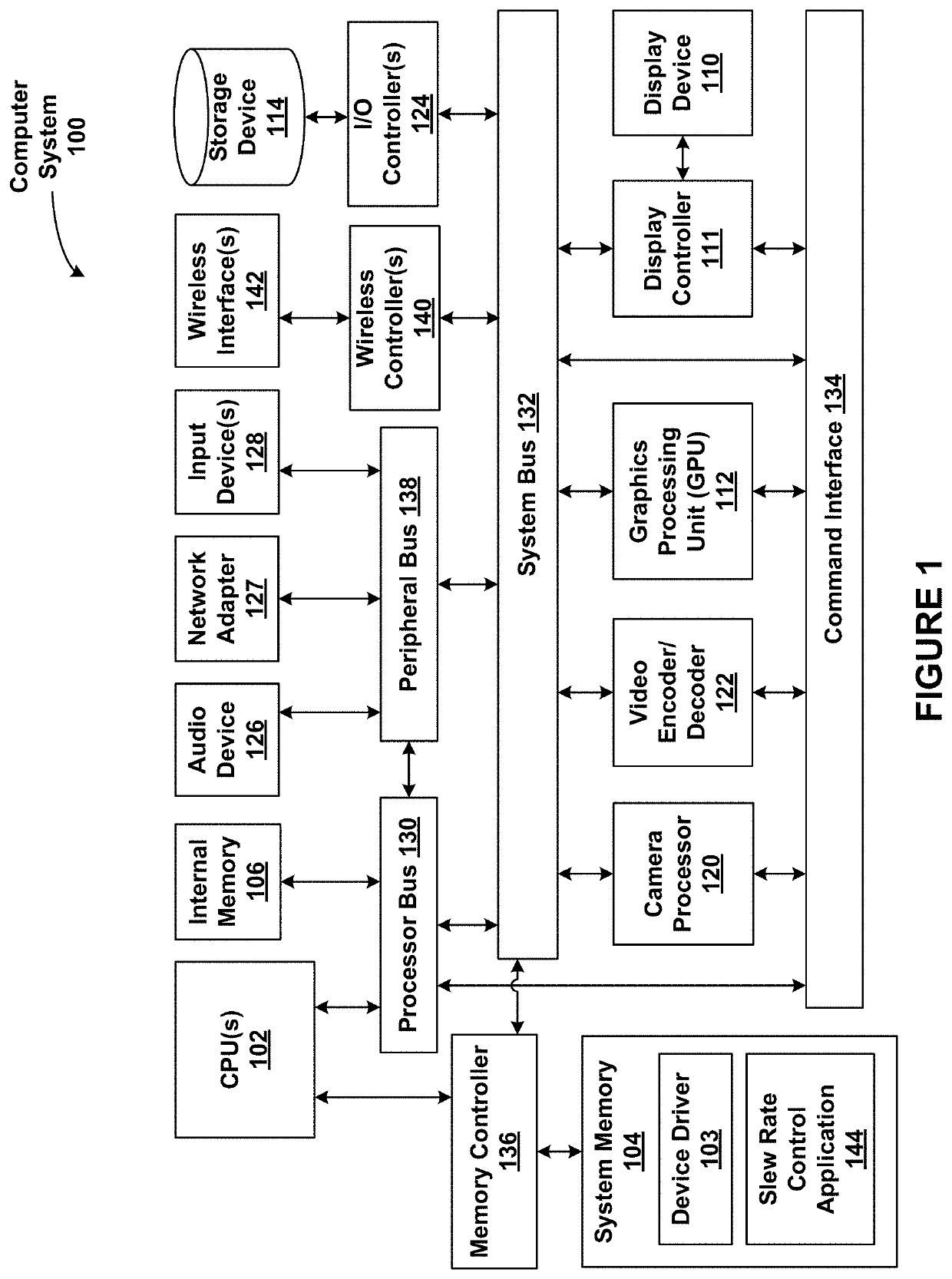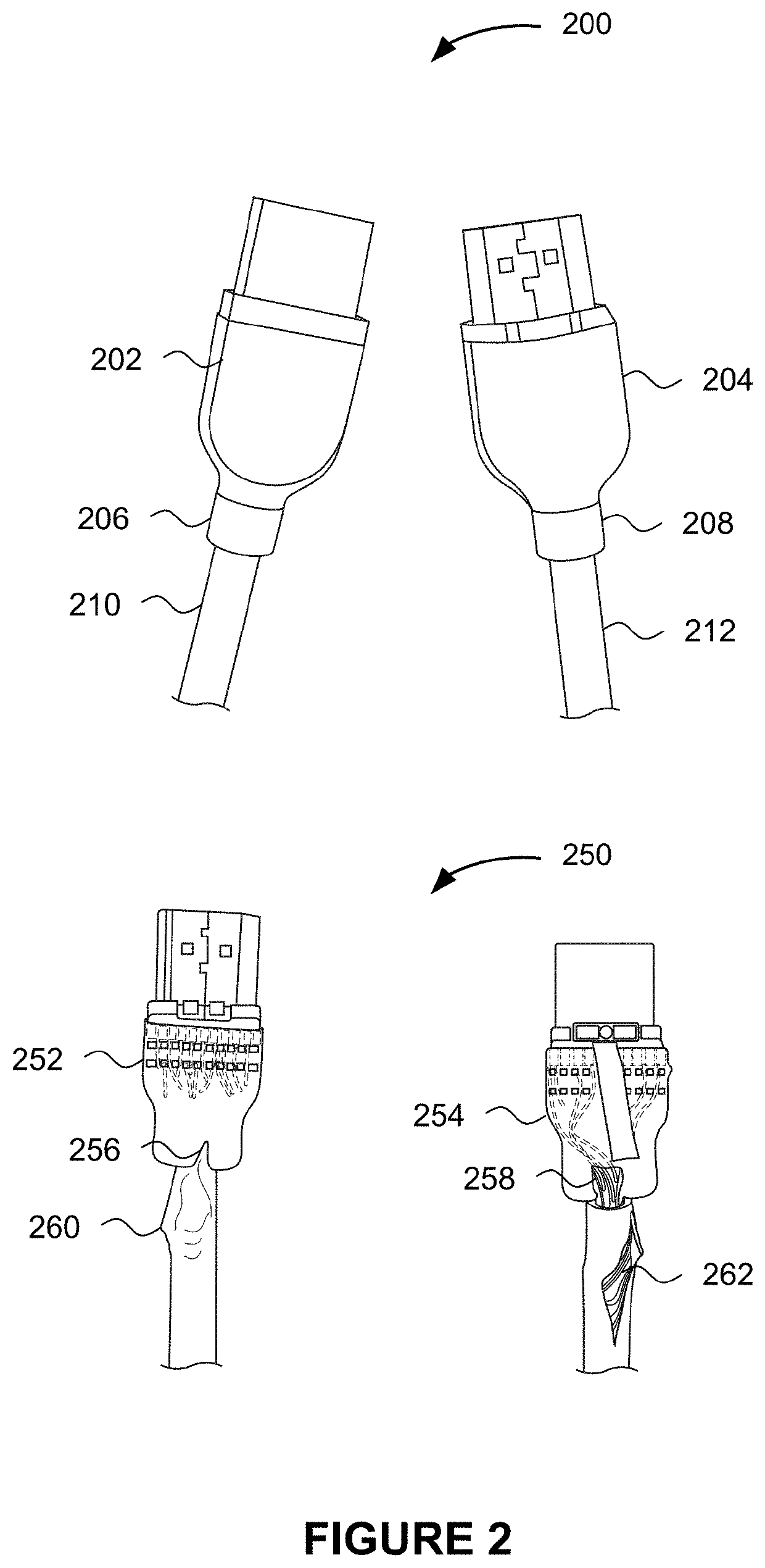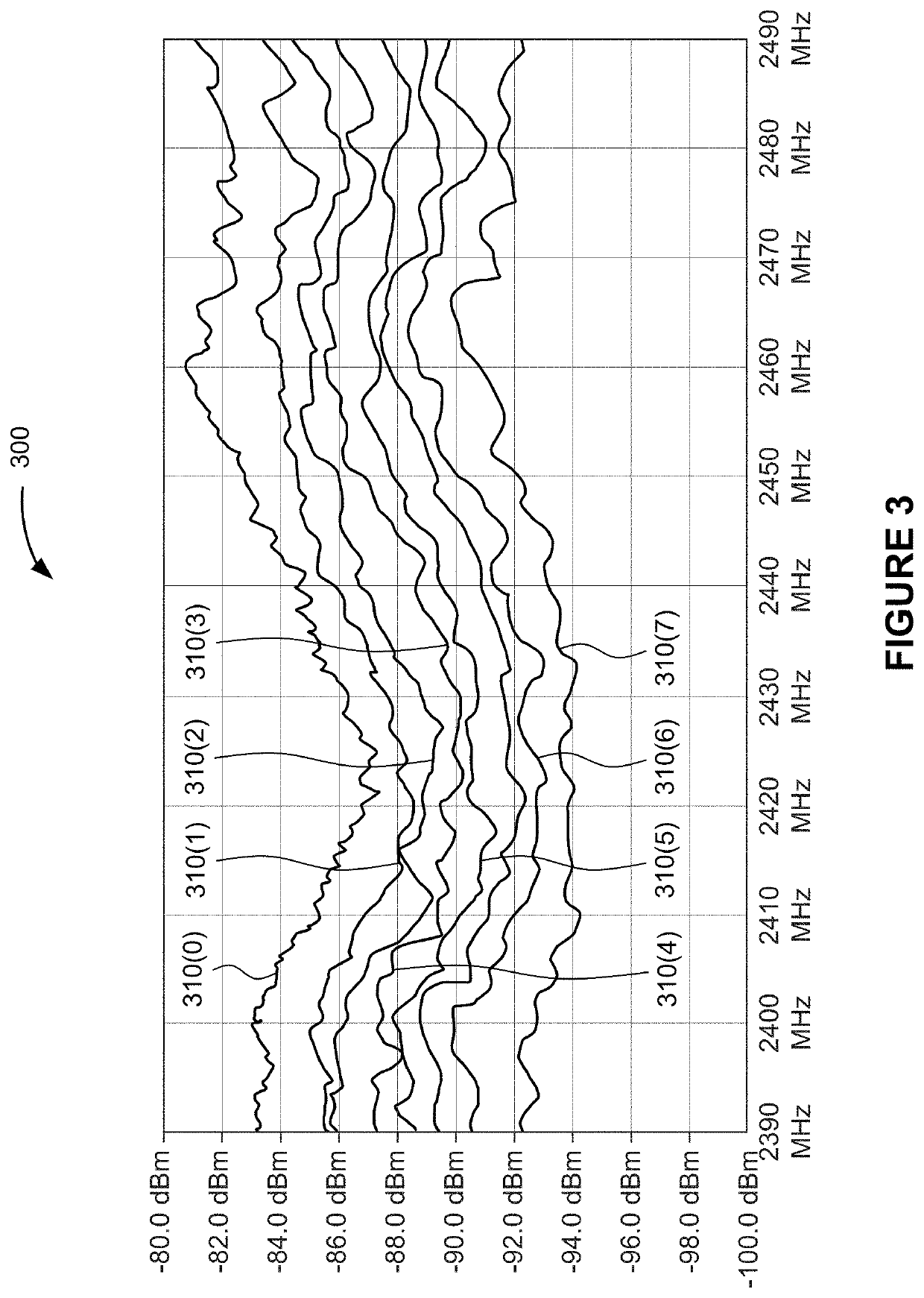Techniques for optimizing wireless communications via dynamic slew rate control of a wired communications channel
a wireless communication and dynamic slew rate technology, applied in the field of computer processing architectures, can solve the problems of interference with another communication channel, data transmitted over the wired communication channel may generate radiated emissions, frequency (rf) noise, etc., and achieve the effect of optimizing the reduction of interference and reducing high-frequency interference from the wired communication channel
- Summary
- Abstract
- Description
- Claims
- Application Information
AI Technical Summary
Benefits of technology
Problems solved by technology
Method used
Image
Examples
Embodiment Construction
[0001]Various embodiments relate generally to computer processing architectures and, more specifically, to techniques for optimizing wireless communications via dynamic slew rate control of a wired communications channel.
Description of the Related Art
[0002]Modern computer-based systems, such as, personal computers, set top boxes, gaming systems, laptop computers, and / or the like, typically include multiple wired and wireless communications channels. Such computer-based systems transmit data to and receive data from, other computer-based systems via these wired and wireless communications channels. In general, different communications channels are designed to not interfere with each other. In that regard, different wireless communications channels may operate in different frequency bands. As a result, data exchanged between computer-based systems via one communications channel operating in one frequency band do not interfere with data exchanged between computer-based systems via anot...
PUM
 Login to View More
Login to View More Abstract
Description
Claims
Application Information
 Login to View More
Login to View More - R&D
- Intellectual Property
- Life Sciences
- Materials
- Tech Scout
- Unparalleled Data Quality
- Higher Quality Content
- 60% Fewer Hallucinations
Browse by: Latest US Patents, China's latest patents, Technical Efficacy Thesaurus, Application Domain, Technology Topic, Popular Technical Reports.
© 2025 PatSnap. All rights reserved.Legal|Privacy policy|Modern Slavery Act Transparency Statement|Sitemap|About US| Contact US: help@patsnap.com



